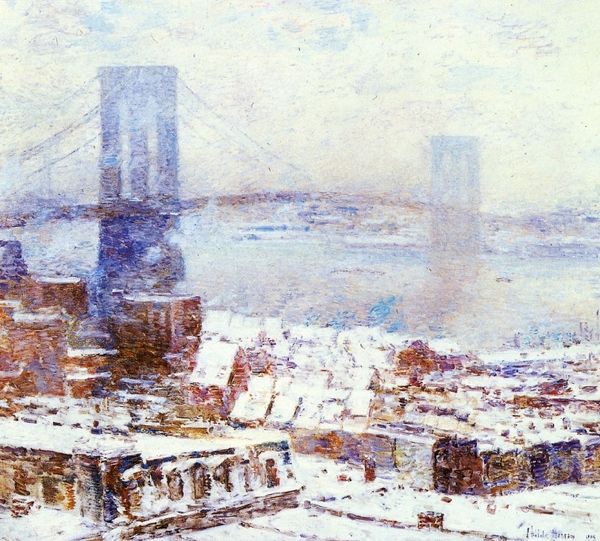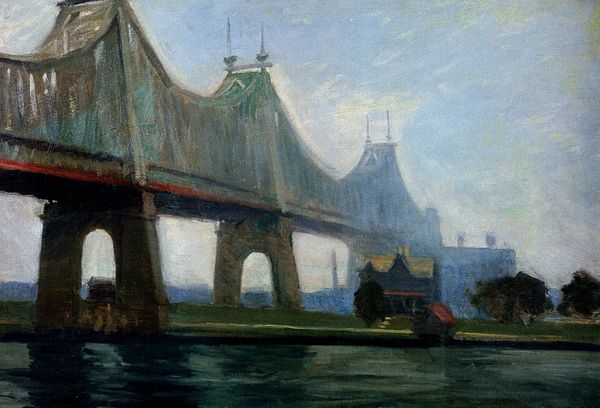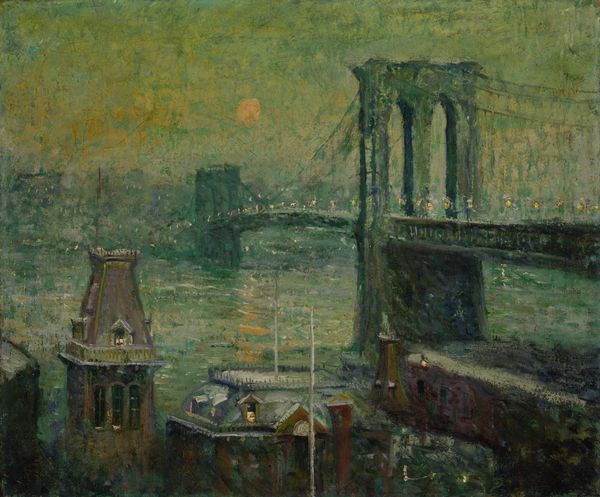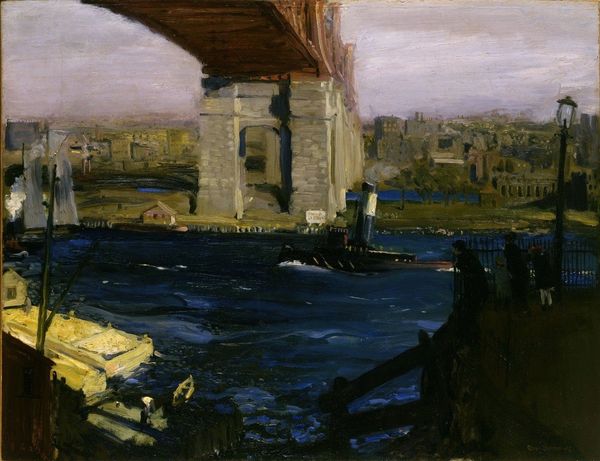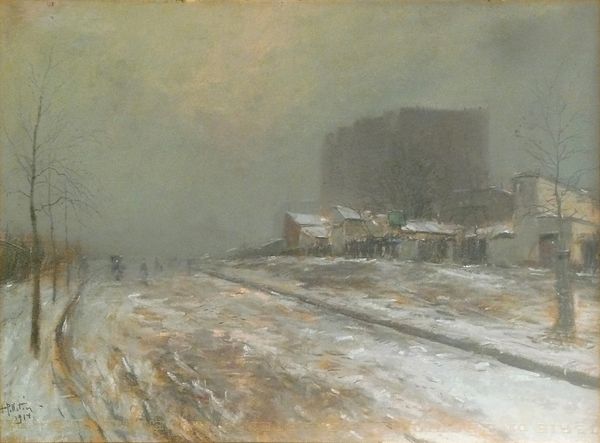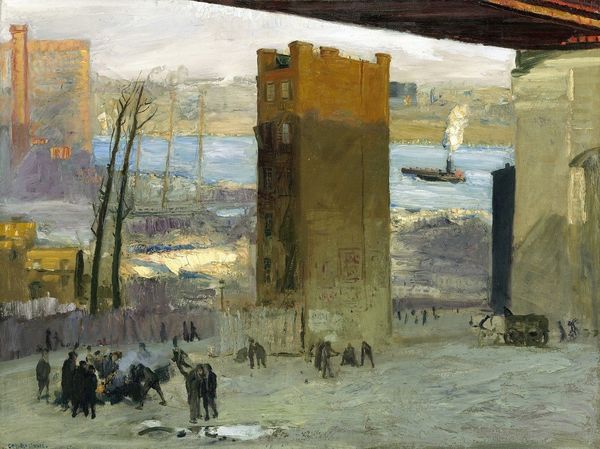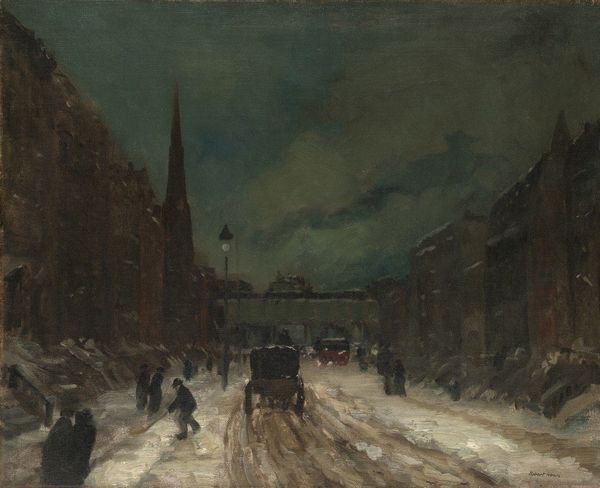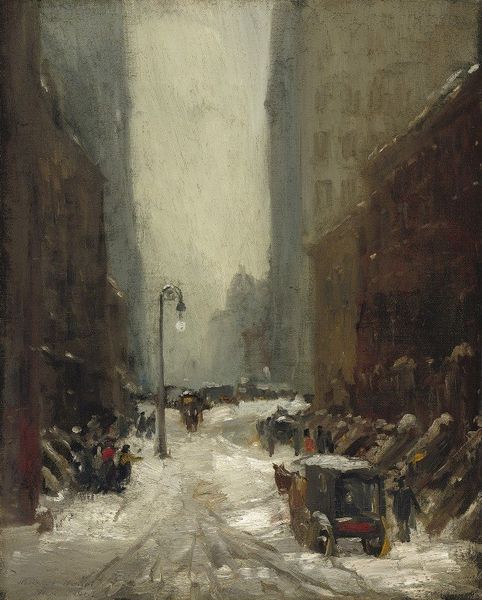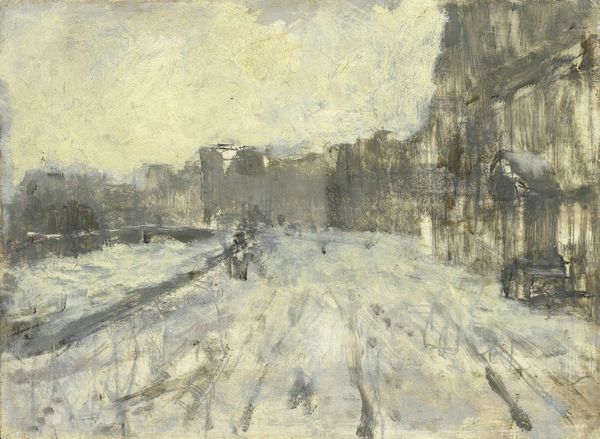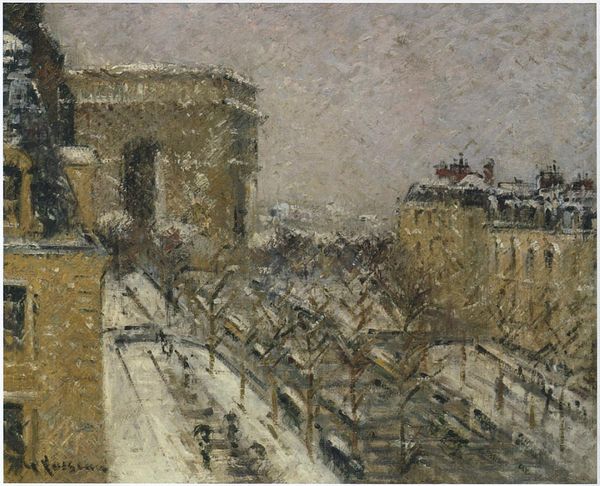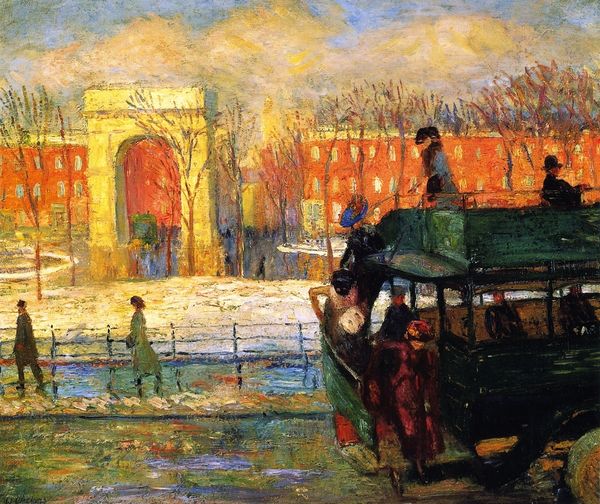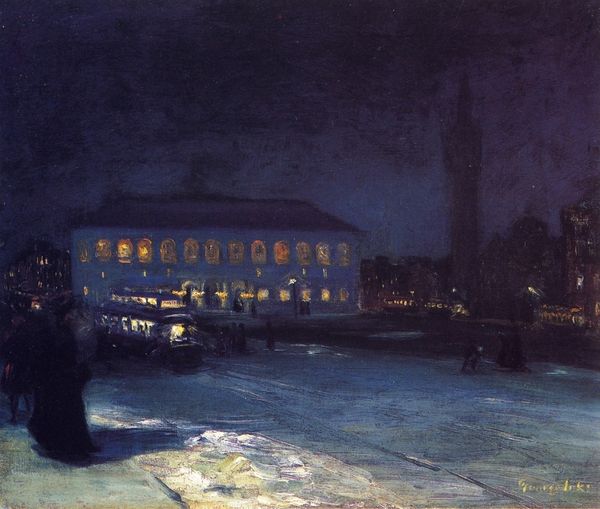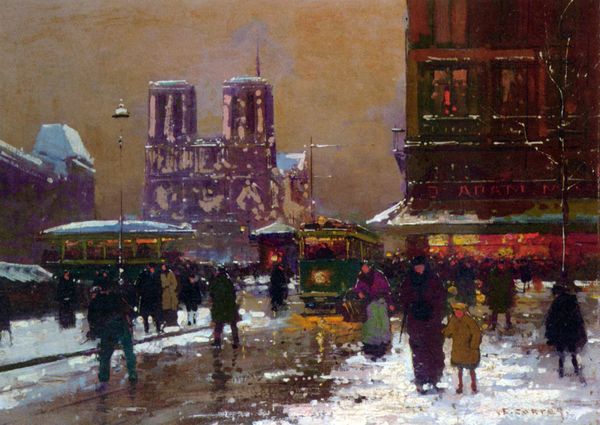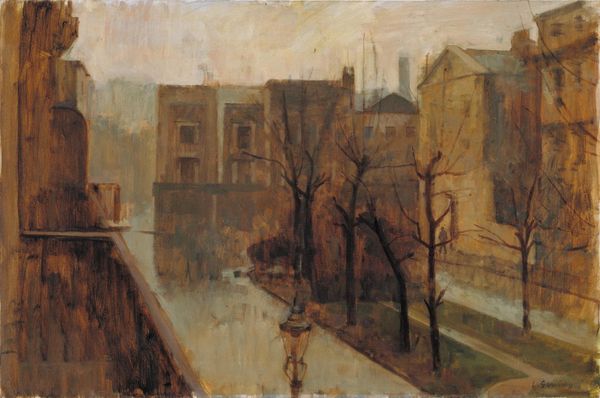
painting, oil-paint
#
painting
#
oil-paint
#
landscape
#
oil painting
#
ashcan-school
#
cityscape
#
realism
Dimensions: 35.56 x 48.26 cm
Copyright: Public domain
Curator: Looking at George Luks' 1916 oil painting, "Brooklyn Bridge," one is immediately struck by the oppressive atmosphere. The monochromatic palette seems to suffocate the canvas. Editor: Yes, a very immediate somberness comes to mind. You feel the weight of the snow on the shacks and see the bridge fading into the gloom—it is the grit and effort it took to build a metropolis! The materiality just screams to me how cold everyone must have been during those long days and nights. Curator: Precisely. The composition reinforces this feeling. Notice the sharp diagonal of the bridge slicing across the upper portion, countered by the cluster of squat buildings huddled below. This creates a visual imbalance, a tension. The bridge, a symbol of progress, is literally overshadowing the human element beneath it. Editor: And the oil paint shows visible brushstrokes which is a characteristic of Ashcan realism. Luks uses broad, vigorous strokes to create a sense of urgency and to define forms with their mass, particularly the buildings and the bridge's cables. Do you feel that these textures almost act like physical stand-ins for the rough urban environment? Curator: Absolutely! And I can't overlook Luks’ brilliant handling of light, particularly the faint illumination emanating from the bridge and the windows below. He directs the eye, guiding us through his depiction, further showing its constructed artificiality through those directed light pools. Editor: It shows how structures and architecture shape the life for all the social classes that live there and it displays their labor and means of support too, I am convinced. You feel how his focus on that period showed how a city's growth is also the material struggle and evolution of an entire community. Curator: Ultimately, Luks invites us to reflect on the complexities of urban life. The bridge may stand for advancement, yet this view depicts a city that's full of material and societal conflicts. Editor: Yes, it feels less like a celebration of engineering and more like an exploration of lived experience; this cityscape shows how daily construction becomes a testament to communal transformation and survival.
Comments
No comments
Be the first to comment and join the conversation on the ultimate creative platform.
